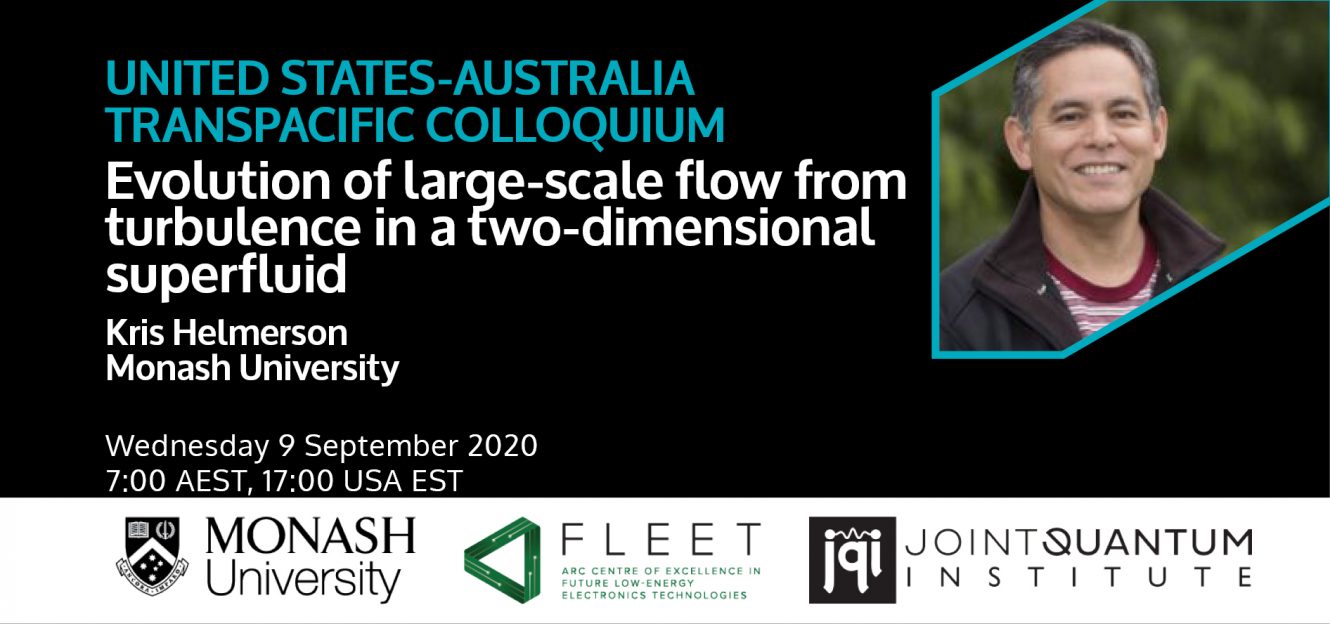-
9 Sep 2020
7:00 am - 8:00 am
Speaker: Kris Helmerson (Monash University)
Evolution of large-scale flow from turbulence in a two-dimensional superfluid
In two-dimensional turbulent flow the seemingly random swirling motion of a fluid can evolve towards persistent large-scale vortices. To explain such behavior, Lars Onsager proposed a statistical hydrodynamic model based on quantized vortices [1], in which the persistent large-scale vortices correspond to negative temperature states. We have confirmed Onsager’s model in an experiment on a superfluid gas of atoms [2]. By dragging grid barriers, formed by an array of laser beams, through an oblate atomic gas Bose-Einstein condensate we generate non-equilibrium distributions of vortices. We subsequently use velocity-selective Bragg scattering and absorption imaging to identify the sign of the circulation and location of the vortices in order to determine the vortex distributions and resultant flow fields. We observe signatures of an inverse energy cascade, in the subsequent evolution of the superfluid, driven by the evaporative heating of vortices, leading to steady-state configurations of clustered vortices characterized by negative absolute temperatures. Our results open a pathway for quantitative studies of emergent structures in interacting quantum systems driven out of equilibrium.
[1] L. Onsager, Il Nuovo Cimento vol. 6, pp. 279-287 (1949).[2] S. P. Johnstone et al., Science vol. 364, pp. 126701271 (2019)
This talk is part of a new series of talks by US and Australian researchers presenting novel developments in condensed matter and cold atomic physics, enriching connections between the two physics communities. Co-presented by FLEET, Monash School of Physics and Astronomy, and the Joint Quantum Institute .

